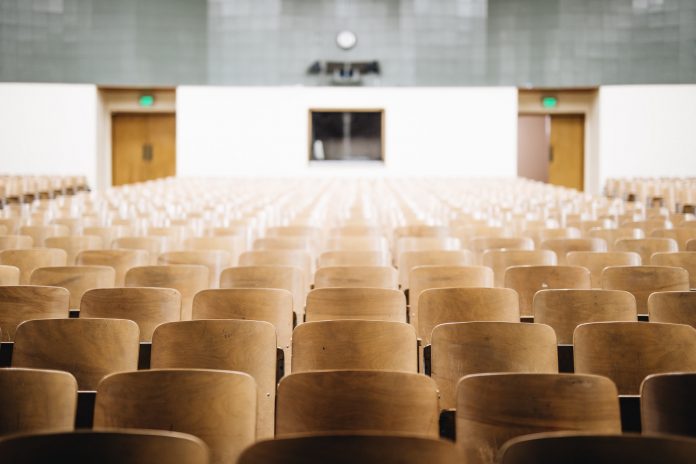In this article, Fulcare explores the ways in which schools and other academic institutes can function with safe processes in place and work towards a low touch economy
After months of closures and unwanted front-page headlines, schools, colleges and universities across the country are set to re-open their doors to students in the traditional September return. But with a firm spotlight on how studies can be carried out safely, will the traditions of classroom learning ever look the same again?
The phrase ‘Low Touch Economy’ has been used to describe how businesses — regardless of sector — will need to operate after lockdown. With education’s battle with the virus well documented, we’re going to look at ways in which schools and other academic institutes can function with safe processes in place.
The Low Touch Economy – what is it?
The Low Touch Economy is the creation of the Board of Innovation. It predicts a new process that all businesses, regardless of sector, will need to work towards in order to remain safe and accessible in a post-lockdown world.
The model focuses on using technology to prevent physical human contact. It highlights the need to increase hygiene awareness and follow the practices. In simple terms, the Low Touch Economy is the ‘new’ normal, and everyone must adapt to it from an economical point of view.
So, how can a sector, reliant on implementing these crucial measures, prepare for the Low Touch Economy?
Supplies to protect teachers & students
Good preparation is key. Ensuring classrooms and lecture theatres stay clean is something that can’t be taken for granted. Relying on cleaners must end too — the need to be prepared for wiping down surfaces and sanitising hands on a regular basis has never been greater.
Promote a safe environment and educate students by stocking up on cleaning products, such as antibacterial spray, bin bags, and disposable gloves. Place hand sanitiser stations around the institute for teachers, students, and staff to use—with the stations placed at the entrance, exit, and other key areas within the building. Blue centrefeed roll is another option for fast-paced environments like classrooms, as it can be used and disposed of in a hygienic way.
Reducing contact as much as possible
As well as keeping premises clean, students, teachers, and other staff members should be spaced two metres apart, or one metre if this isn’t possible. Having stickers on the floor indicating two-metre distances is a great way to not only guide students and staff but also to remind them to keep a safe distance from others.
Introducing a one-way system will keep things running smoothly like without causing too many problems. It also means people don’t need to worry about accidentally bumping into someone going the other way when they turn around. Desks should also be spaced two-metres apart, or one-metre if, again, this isn’t achievable.
Now is the ideal opportunity to see if upgrades can be made to technology if outbreaks of the virus continue over the coming months. We’ve seen how travel has been ‘stop start’ from a quarantine point of view, so it’s important teachers and governing bodies plan for a possible second string of closures.
With the risk of local lockdowns still high, students face the reality of having face-to-face studies one day, and then learning from home, the next. Lowering the amount of human contact along the chain may seem like a painful decision to make, but in terms of hygiene, it could well be the case that investing in technology is a deal breaker for things still running like clockwork.
A staggered approach
Classrooms can sometimes be restrictive in terms of space. In this case, a one-way system may not be the most practical, nor will you be able to keep your students two metres apart. If this is the case, other than running the risk of further closures, another option could be to run a rota system for students—a bit like we’ve seen with office workers across the UK.
To help prevent the spread of a virus that’s already caused problems, a system where some students are in the classroom and some are at home dialling into a video call may well be a case of ‘needs must’.
A report conducted by Promethean’s State of Technology in Education showed that twice the number of respondents were leaning towards using technology to teach students in 2019/2020, and the number will no doubt increase for 2021 as teachers get their heads around the safest ways possible to teach their students.
For the education sector, the willingness to adapt could be the difference between thriving or going through another rough period where newspaper headlines write themselves. Preparation is key, especially with schools and the like ready to go back in September.
Sources
https://www.boardofinnovation.com/low-touch-economy/
https://www.fulcare.co.uk/standard-centrefeed-roll-blue-150m-19cm-2ply-6-unit.html











